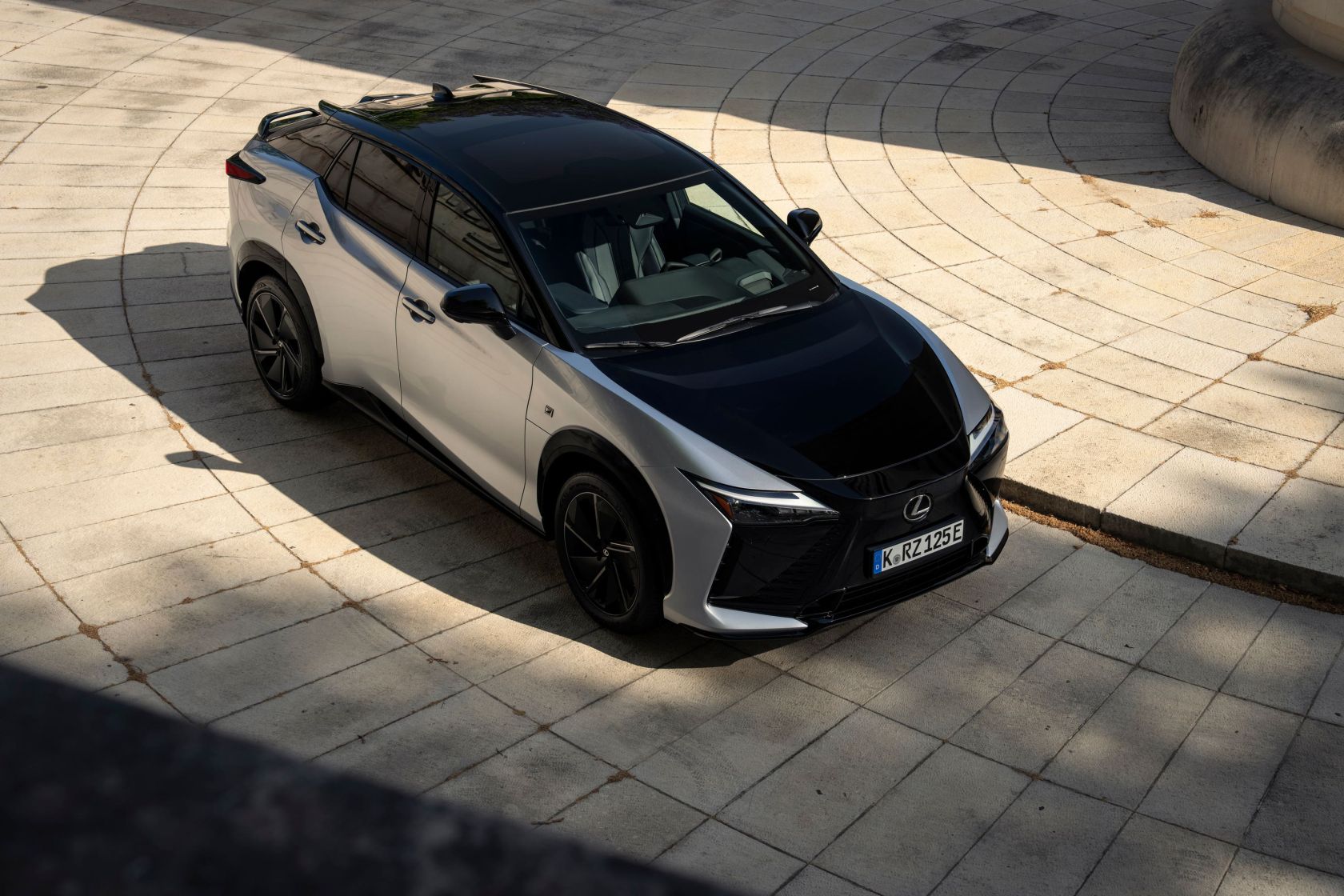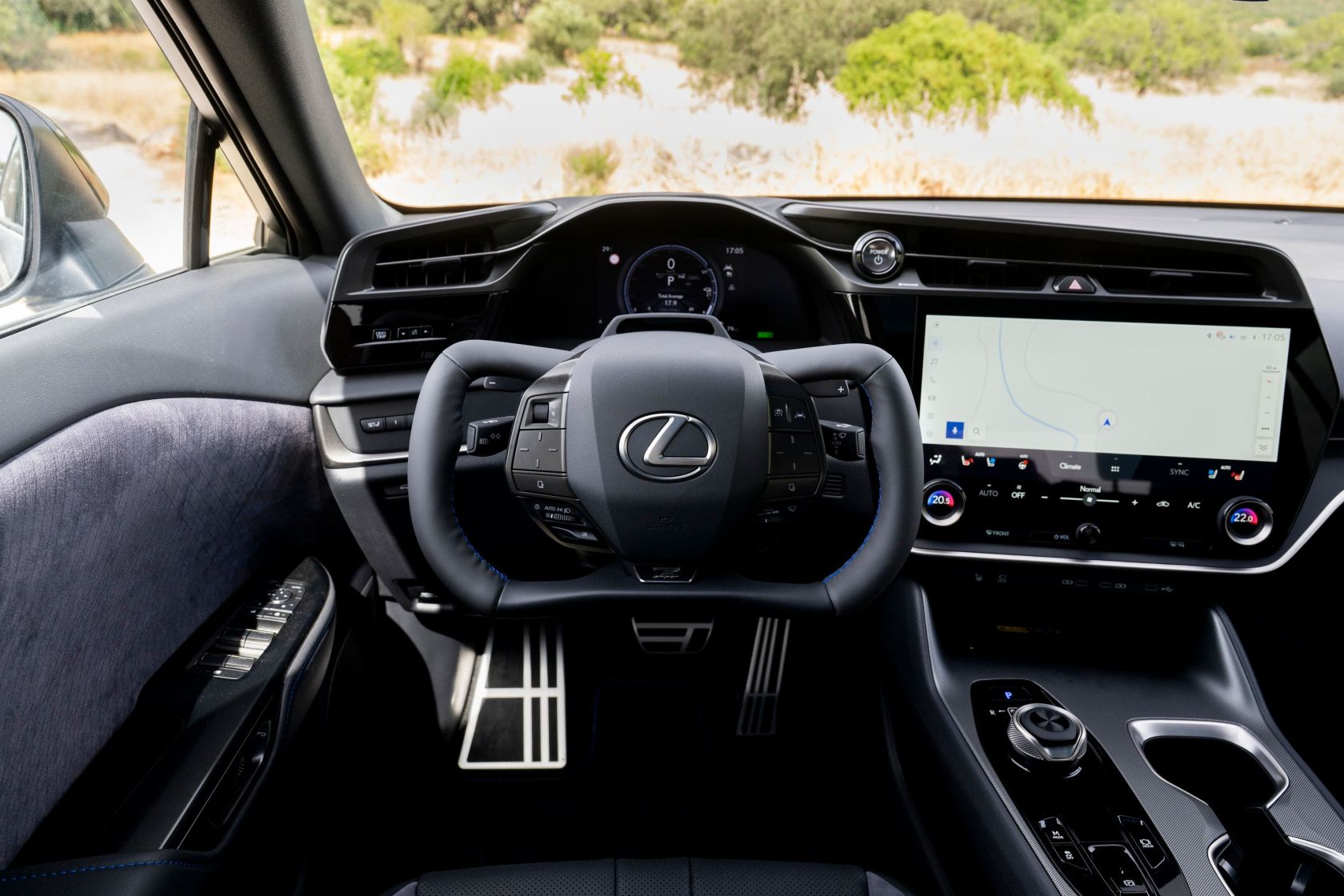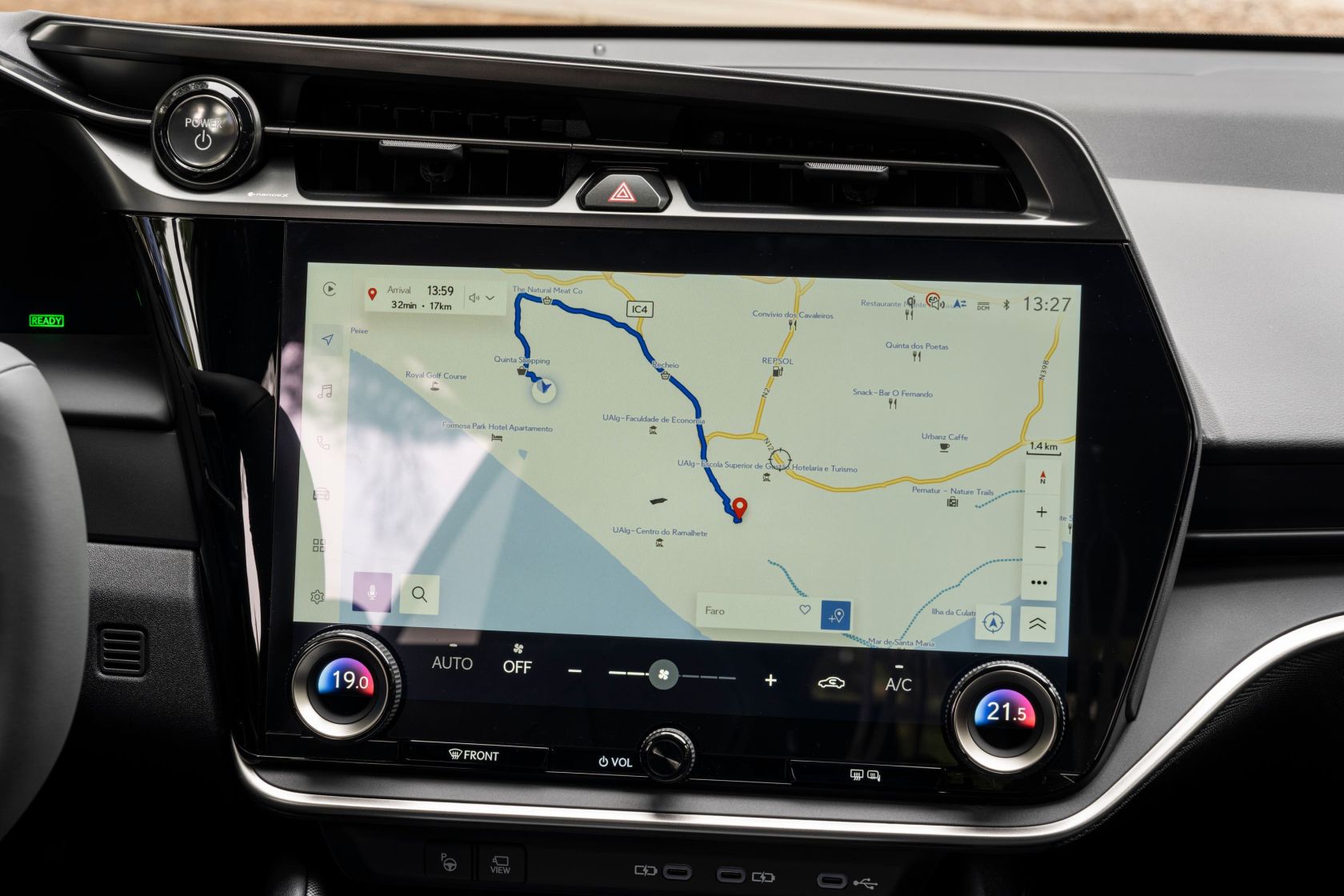What is it?
It may look the same as the outgoing RZ at a quick glance, but this new one is comprehensively updated.
Virtually everything has been changed – from the battery and the power output to a brand new trim level and a fake ‘manual’ gearbox. Some models don’t even have a steering column – yes, really.
What’s new?

Let’s start off with the steering. Lexus’s new steer-by-wire system is the type of tech we’ve heard about for a long time, but never really thought would appear on a car this side of the year 3000.
In some models, the normal steering wheel has been replaced with a ‘yoke’ like you’d find in an aeroplane, which is connected to sensors and a motor. Through a wire, these talk to another motor at the front wheels, so when the yoke is turned so do the wheels.
Cleverly, the system adapts to speed and input, so, at low speeds, you can get full lock with one 200-degree turn of the wheel – with conventional steering wheels, the driver needs to cross their arms over and hand over hand to achieve the same lock. The steer-by-wire is also paired with ‘Interactive Manual Drive’ – a virtual manual gear-shifting system.
What’s under the bonnet?
Lexus has ditched the previous RZ’s 71.4kWh battery for a larger 77kWh pack, boosting the range noticeably – the RZ 350e front-wheel drive model fitted with 18-inch wheels, for instance, can now travel 58 miles further than before at 353 miles. If you want the longest range possible from an RZ, this is the model to go for as the two other versions trade range for performance.
The new RZ 500e and 550e have all-wheel drive and pack 376bhp and 402bhp respectively. They’re around three seconds quicker to 60mph than the 350e and have a higher top speed (112mph compared to the lesser model’s 99mph), but suffer between charges – the 500e manages a claimed 311 miles on 18-inch wheels and 283 miles with 20-inch wheels, and the 550e needs refilling at 280 miles.
What’s it like to drive?
Go for the standard steering system and the RZ drives just like the previous version, albeit it’s slightly quieter with less wind noise, presumably thanks to the new sound insulation. It’s a very comfortable and refined driving experience overall; more supple on smaller wheels, while cars with larger rims have sharper steering feel and responses.
What you really want to know is how do cars with the steer-by-wire system feel? It’s very odd at first, especially at low speeds as you really have to recalibrate your brain. But, after a while, it becomes a bit more intuitive, while the fake manual gearbox is very well calibrated. Press the ‘M’ button on the centre console and the paddles behind the wheel that normally adjust the brake regeneration switch to changing virtual gears, while fake engine noise enters the cabin.
You really do have proper manual control, so if you don’t change up into another ‘gear’ the ‘engine’ will hit a virtual rev limiter and stop accelerating. This is matched to the sound from the speakers with the engine bouncing off the rev limiter. It’s not quite as believable or intoxicating as the system Hyundai has developed for the Ioniq 5 N, but it’s not far off.

How does it look?
With this update Lexus hasn’t sought to change the car’s design, rather it has focussed on arguably more important things such as range and technology.
That said, it has introduced a new top-spec trim level – the RZ becomes the first electric Lexus to come in racy F Sport guise. This trim gets new front and rear bumpers, a rear diffuser and boot spoiler, along with 20-inch aero wheels and blue-painted brake callipers. No matter which trim level you go for, though, the RZ still stands out and looks fresh compared to other premium electric SUVs.
What’s it like inside?
Again, Lexus hasn’t focused on the interior with this update with there being the same high-quality cabin. The new F Sport trim level does add a little more interest than before thanks to its ‘Ultrasuede’ upholstery and blue stitching, but the smaller yoke steering wheel does give an oddly unfinished look due to the huge gap between the wheel and the instrument binnacle.
Interior space is good; there’s plenty of room in the back seats despite that sloping roof line, although the 522-litre boot is just average for the class.

What’s the spec like?
The old car’s 11 trim levels have been slashed to five, with the entry-level Premium getting a 22kW onboard charger, a panoramic roof, electrically adjustable heated front seats and steering wheel, and a 14-inch infotainment system. Premium Plus adds extras such as a head-up display and ventilated seats, while Takumi gets a fancy Mark Levinson audio system, dimmable glass roof, and a digital rear view mirror.
The F Sport and F Sport Takumi come with the sporty flourishes already mentioned, along with the steer-by-wire system – there is no option to select normal steering, and indeed the lower trim levels cannot come with it either.

Verdict
The updates have rectified probably the previous RZ’s biggest problem – range. This new version now puts Lexus’s electric SUV more on par with rivals like the Audi Q4 E-tron, Genesis GV60 and Volvo EX40 in having the type of range you’d expect from a premium offering.
It’s a shame that the admittedly clever steer-by-system will likely be shunned by many buyers in the UK on account of unfamiliarity, and it’s a pain that there’s no option to delete it on the new top-spec models. It does give the RZ a USP in a crowded class, though, and doesn’t detract from the fact that the RZ is a plush feeling and very likeable electric SUV.
Facts at a glance
Model as tested: Lexus RZ 550e F Sport Takumi
Engine: Dual electric motors
Power: 402bhp
Torque: 538Nm
Max speed: 112mph
0-60mph: 4.2 seconds
MPG: NA
Emissions: 0g/km
Range: 280 miles
Charging speed: 150kW














